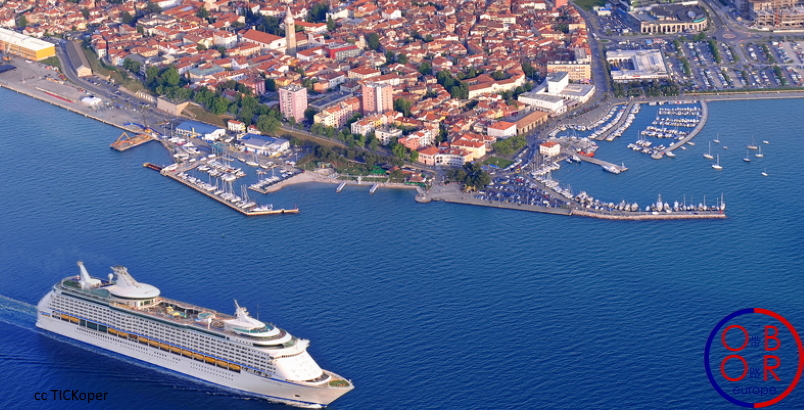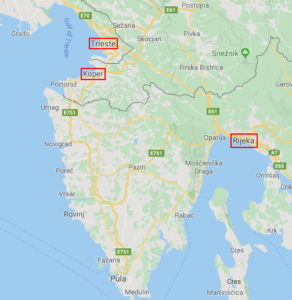
On December 14, 2019, the Chinese Minister for Foreign Affairs, Mr. Wang Yi conducted an official visit to Slovenia where he met the highest authorities in the country: President Mr. Borut Pahor, Prime Minister Marjan Sarec, as well as his counterpart Miro Cesar to discuss cooperation between China and Slovenia
Slovenia has pledged for several years to support the development of the Belt and Road initiative, and hopes to strengthen trade with China, particularly in the area of artificial intelligence. In April 2019, the Slovenian government confirmed that the country would host one of the main European research centers dedicated to artificial intelligence supported by UNESCO. The new center is expected to actively cooperate with Chinese tech giants.
Koper, a hub in the Adriatic?
During this meeting, the Minister of Foreign Affairs, Miro Cesar, said he wanted Koper, the main Slovenian port, to become a major hub in the Adriatic Sea for Chinese companies.

Koper is the most important container port in the Adriatic Sea (967,000 TEU in 2018). It is also ranks 80th for its connectivity in the world (and ranks first in the Adriatic) according to UNCTAD. Its location makes it a major hub for accessing the main markets of Central Europe. Regular rail lines connect the port of Koper to Munich, Salzburg, Bratislava, Budapest, Belgrade, etc.
The port of Koper has already embarked on the new Silk Roads in June 2018 by signing a MoU with the Chinese port of Ningbo (4th busiest containers port- TEU). One of Koper’s assets for Chinese companies is the importance of its connections to Central Europe.
Koper and the other Adriatic port
Koper is not the only port un the Adriatic Sea to want to attract Chinese investors and transform itself into a hub for the BRI.
Being an official member of the BRI, Italy hopes to make Trieste the main destination for Chinese container ships in the Mediterranean; however, Trieste faces a pressing need for investment to develop its port.
Further south, in Croatia, the port of Rijeka also aims to become a new vector for trade between Europe and China. Croatia has undertaken the modernization of this port with a new railway line connecting it to Zagreb. Since October 2019, Rijeka has been served by the Chinese company COSCO which has set up a line connecting the south China to Budapest, via Rijeka in only 28 days.
These three ports are very close to each other and cooperate together with Ravenna and Venice through the North Adriatic Ports Association. However, this local cooperation can be undermined by capitals; each of which hopes to become China’s privileged interlocutor in the Adriatic
China and the competition in the Adriatic
Competition between European ports is regularly analyzed as a way for China to strengthen its influence on European Union member states. However, if China can hope to profit in the short term from an increasing competition between ports in the Adriatic Sea, this competition is also damaging to Chinese interests. The lack of coordination between the ports of Trieste, Koper and Rijeka would slow the creation of new infrastructure and the development of traffic in this part of the Mediterranean. The risk would be that China would turn away from the Adriatic ports, despite its strategic position in the heart of Europe because of too many obstacles.
The future of the port of Koper will also depend on the possible development of a rail line between Piraeus, where COSCO has invested heavily, and Budapest; but above all, for ports in the Adriatic EU-China trade needs to grow, this means that European businesses needs to increase exports to China.
